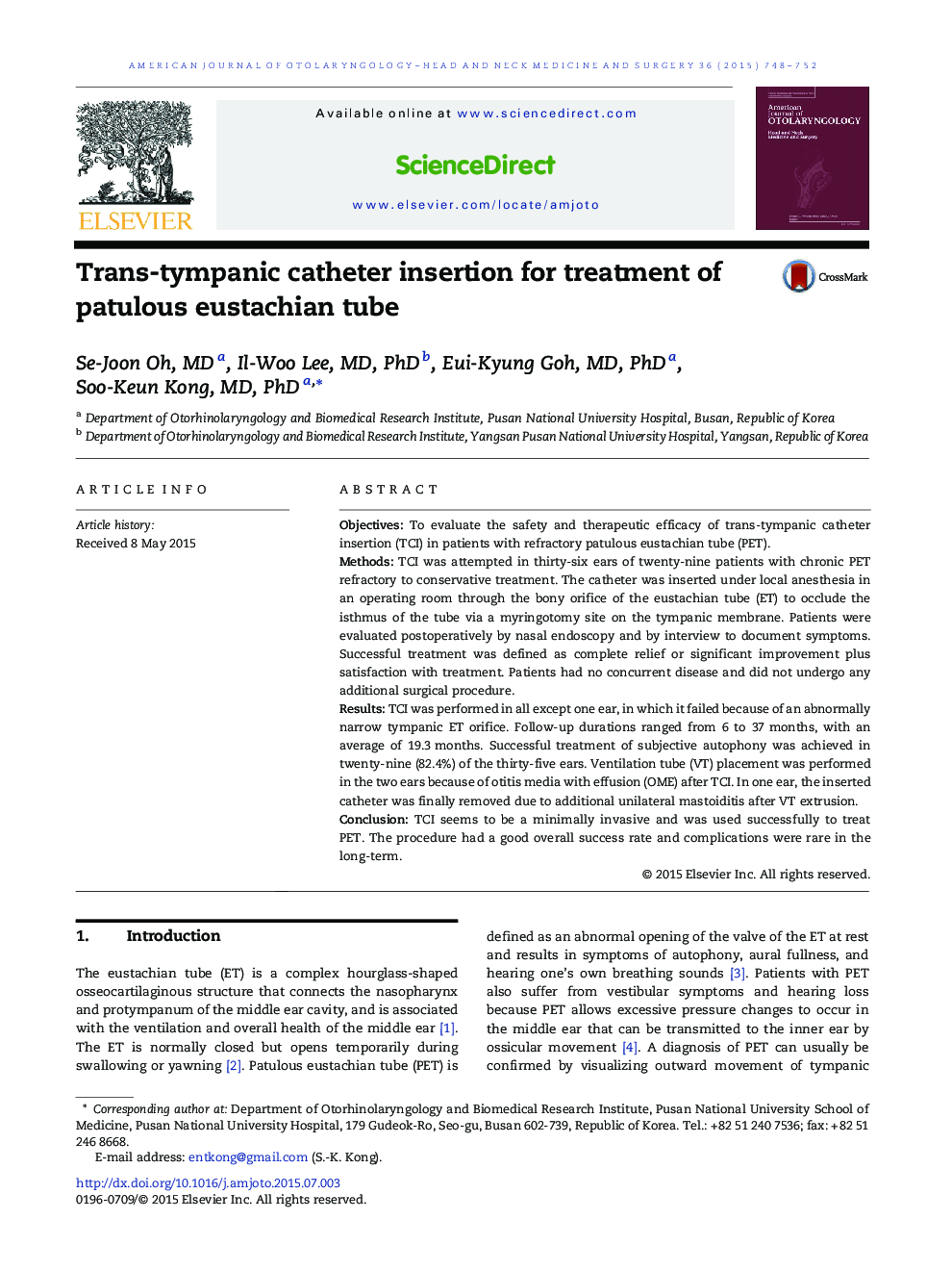| Article ID | Journal | Published Year | Pages | File Type |
|---|---|---|---|---|
| 4103275 | American Journal of Otolaryngology | 2015 | 5 Pages |
ObjectivesTo evaluate the safety and therapeutic efficacy of trans-tympanic catheter insertion (TCI) in patients with refractory patulous eustachian tube (PET).MethodsTCI was attempted in thirty-six ears of twenty-nine patients with chronic PET refractory to conservative treatment. The catheter was inserted under local anesthesia in an operating room through the bony orifice of the eustachian tube (ET) to occlude the isthmus of the tube via a myringotomy site on the tympanic membrane. Patients were evaluated postoperatively by nasal endoscopy and by interview to document symptoms. Successful treatment was defined as complete relief or significant improvement plus satisfaction with treatment. Patients had no concurrent disease and did not undergo any additional surgical procedure.ResultsTCI was performed in all except one ear, in which it failed because of an abnormally narrow tympanic ET orifice. Follow-up durations ranged from 6 to 37 months, with an average of 19.3 months. Successful treatment of subjective autophony was achieved in twenty-nine (82.4%) of the thirty-five ears. Ventilation tube (VT) placement was performed in the two ears because of otitis media with effusion (OME) after TCI. In one ear, the inserted catheter was finally removed due to additional unilateral mastoiditis after VT extrusion.ConclusionTCI seems to be a minimally invasive and was used successfully to treat PET. The procedure had a good overall success rate and complications were rare in the long-term.
